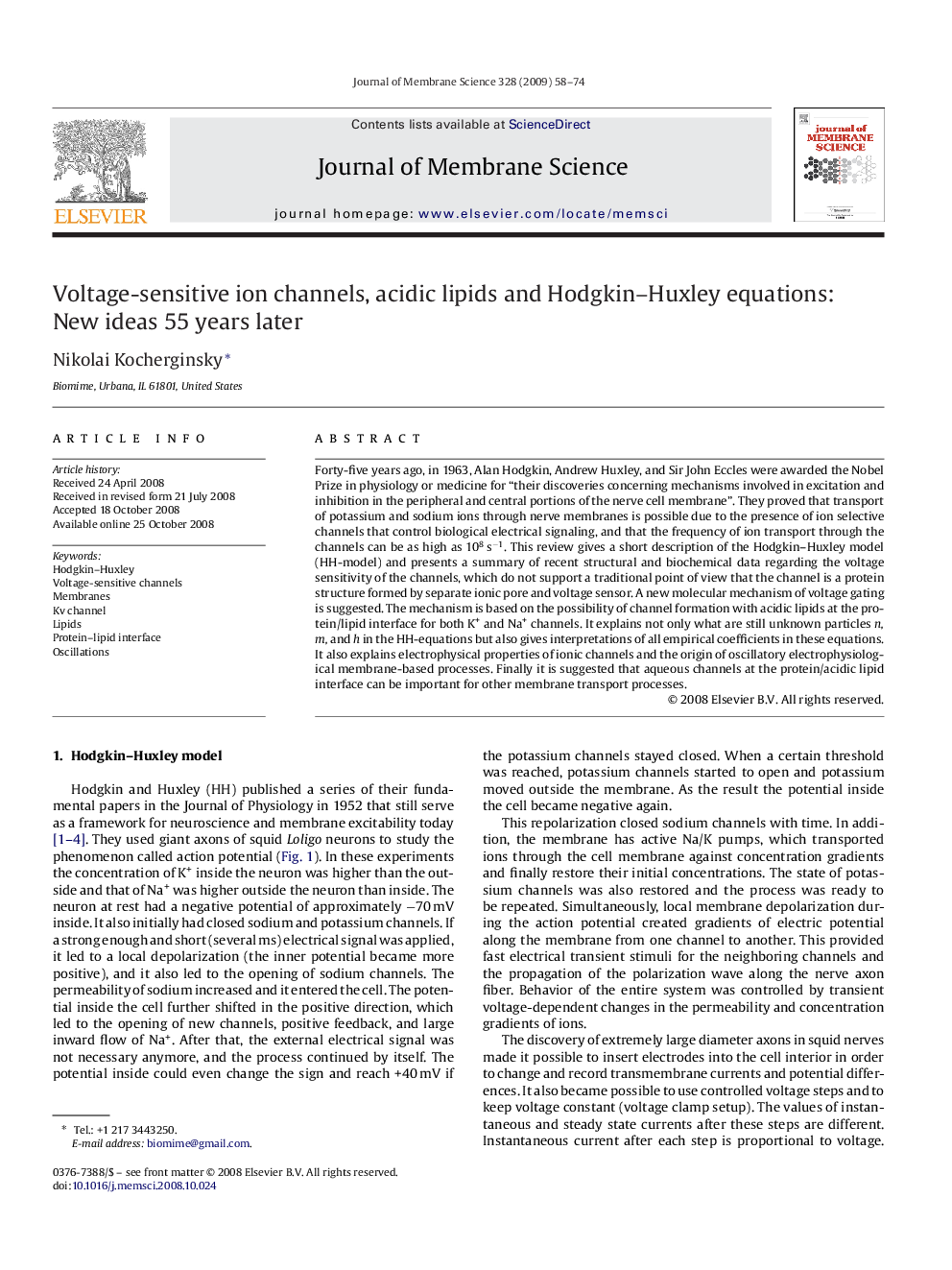| Article ID | Journal | Published Year | Pages | File Type |
|---|---|---|---|---|
| 637319 | Journal of Membrane Science | 2009 | 17 Pages |
Forty-five years ago, in 1963, Alan Hodgkin, Andrew Huxley, and Sir John Eccles were awarded the Nobel Prize in physiology or medicine for “their discoveries concerning mechanisms involved in excitation and inhibition in the peripheral and central portions of the nerve cell membrane”. They proved that transport of potassium and sodium ions through nerve membranes is possible due to the presence of ion selective channels that control biological electrical signaling, and that the frequency of ion transport through the channels can be as high as 108 s−1. This review gives a short description of the Hodgkin–Huxley model (HH-model) and presents a summary of recent structural and biochemical data regarding the voltage sensitivity of the channels, which do not support a traditional point of view that the channel is a protein structure formed by separate ionic pore and voltage sensor. A new molecular mechanism of voltage gating is suggested. The mechanism is based on the possibility of channel formation with acidic lipids at the protein/lipid interface for both K+ and Na+ channels. It explains not only what are still unknown particles n, m, and h in the HH-equations but also gives interpretations of all empirical coefficients in these equations. It also explains electrophysical properties of ionic channels and the origin of oscillatory electrophysiological membrane-based processes. Finally it is suggested that aqueous channels at the protein/acidic lipid interface can be important for other membrane transport processes.
